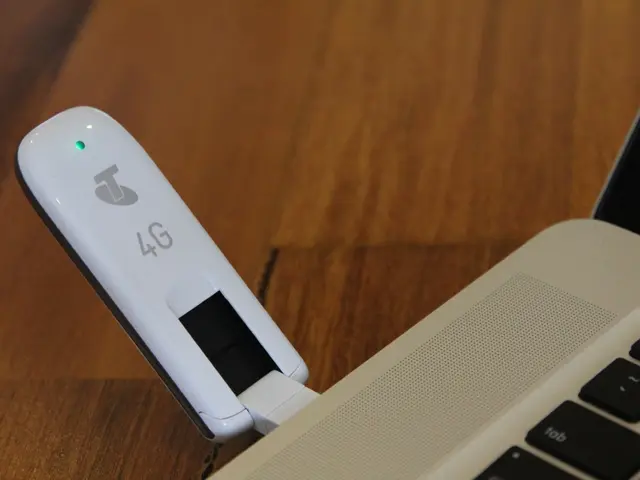Enhancing Gaming Accessibility: Expanding Nerd Culture to Encourage Diversity
In the ever-evolving world of video games, a significant shift has been taking place towards making gaming more accessible for a diverse range of players. According to recent statistics, around 16% of the global population are disabled, representing a substantial portion of potential gamers [1]. Recognising this, developers and studios are increasingly prioritising accessibility in their workflow, educating their teams on the subject to ensure that everyone can enjoy their games [2].
One area where progress has been made is in visual accessibility. Games like The Last of Us Part II, released in 2020, offer over 60 accessibility settings to accommodate different visual needs. These settings allow for customisable text and visual aspects, ensuring that the game is readable for players with a variety of visual impairments [3]. Visual cues are also made bigger and clearer to help players with lower vision notice essential elements [4].
For those with auditory disabilities, subtitles have become a basic accessibility feature in many games [5]. Moreover, no information should rely solely on sound, ensuring that all players can follow the game's narrative and mechanics.
Cognitive accessibility is another important consideration. Clear, readable fonts are beneficial, and text-to-speech is a useful tool for those with dyslexia or other cognitive disabilities [6].
Consulting directly with members of the communities they are building games for is crucial for developers and studios. This approach has led to innovative solutions such as incorporating American Sign Language (ASL) hand shapes into puzzles in some musical video games [7].
Sign language interpretation and localisation are also important considerations for Deaf players. Games like Forza Horizon 5 launched a free update in 2022 that included ASL and British Sign Language (BSL) signing done by Deaf actors for cutscenes [8].
For motor accessibility, controls should be adjustable to the player's needs, and the game should use the same input method for menus and gameplay [9]. Allowing for different input devices and adjusting speed and cool-down periods can make games more accessible for people with motor disabilities.
The passage of the Video Communications Act (VCA) in 2010 laid out some accessibility regulations specific to gaming [10]. This marked a turning point in the industry's approach to accessibility, with major strides being made by developers like Microsoft with "Forza Horizon 5" and "Halo Infinite," as well as Naughty Dog with "The Last of Us Part II." These games exemplify impressive accessibility features that strive to include players with various disabilities [11].
The journey towards greater game accessibility began as early as 1989, with Nintendo officially releasing the first hands-free controller for the NES, allowing players to control a stick using their mouth while blowing into a tube [12]. More recently, in 2018, the VR game Moss was released with its main character using ASL to communicate with players [13].
In the same year, Celeste implemented an assist mode, allowing players to adjust speed, become invincible, and skip levels entirely [14]. This demonstrates a commitment to making games accessible for players with a wide range of abilities.
Approximately 25% of people in the United States have a disability [15], highlighting the potential market for accessible gaming. The inclusion of accessibility features at the OS level, such as button mapping in the PlayStation OS version 3.1 in 2009 [16], is a testament to the industry's growing recognition of this potential.
As the gaming industry continues to evolve, it is clear that accessibility will remain a key focus. By prioritising inclusivity, developers and studios can ensure that their games are enjoyed by as many people as possible, regardless of their abilities.
[1] Globally, disabled people make up around 16%. [2] Developers and studios should educate their teams on the subject of accessibility and prioritize it in their workflow. [3] In 2020, The Last of Us Part II released with over 60 accessibility settings to accommodate different visual, motor, and auditory needs. [4] For visual accessibility, text and other visual aspects of the game should be customizable, and visual cues should be big enough and clear enough for players with lower vision to notice. [5] For auditory accessibility, subtitles are a basic accessibility feature that games should include, and no information should rely solely on sound. [6] For cognitive accessibility, clear, readable fonts are beneficial, and text to speech is a useful tool for those with dyslexia or other cognitive disabilities. [7] Consulting directly with members of the communities they are building games for is important for developers and studios. [8] In 2022, Forza Horizon 5 launched a free update that included American Sign Language (ASL) and British Sign Language (BSL) signing done by Deaf actors for cutscenes. [9] For motor accessibility, controls should be adjustable to the player’s needs, and the game should use the same input method for menus and gameplay. [10] The passage of the Video Communications Act (VCA) in 2010 laid out some accessibility regulations specific to gaming. [11] Major progress in game accessibility in recent years has been made by developers like Microsoft with "Forza Horizon 5" and "Halo Infinite," as well as Naughty Dog with "The Last of Us Part II," which feature extensive accessibility options including customizable controls, visual and auditory aids, and difficulty adjustments. These games exemplify impressive accessibility features that strive to include players with various disabilities. [12] In 1989, Nintendo officially released the first hands-free controller for the NES, allowing players to control a stick using their mouth while blowing into a tube. [13] In 2018, the VR game Moss was released, with its main character using American Sign Language (ASL) to communicate with players. [14] In 2018, the game Celeste implemented an assist mode, allowing players to adjust speed, become invincible, and skip levels entirely. [15] Approximately 25% of people in the United States have a disability. [16] Button mapping was included in the PlayStation OS version 3.1 in 2009, marking the first example of consoles adding accessibility features at the OS level.
Read also:
- Review of the 2025 Lamborghini Revuelto: Blazing Beasts on Wheels
- Examining Digital Payment Cards in Nigeria (2025)
- California links 100,000 home storage batteries through its Virtual Power Plant program.
- Fortnite supporters experience uncertainty as Epic Games criticizes the CMA for postponing the iOS release in the UK







